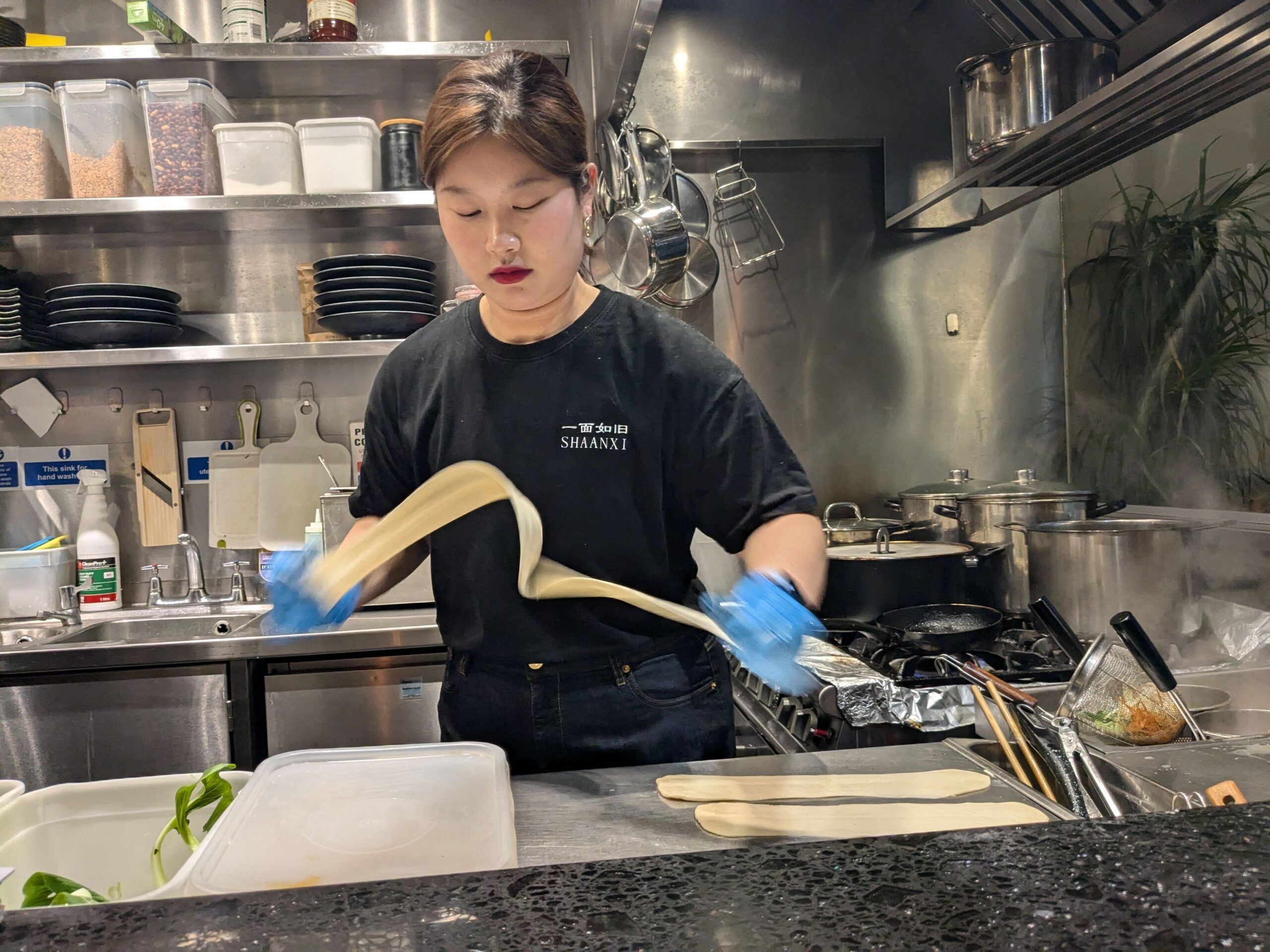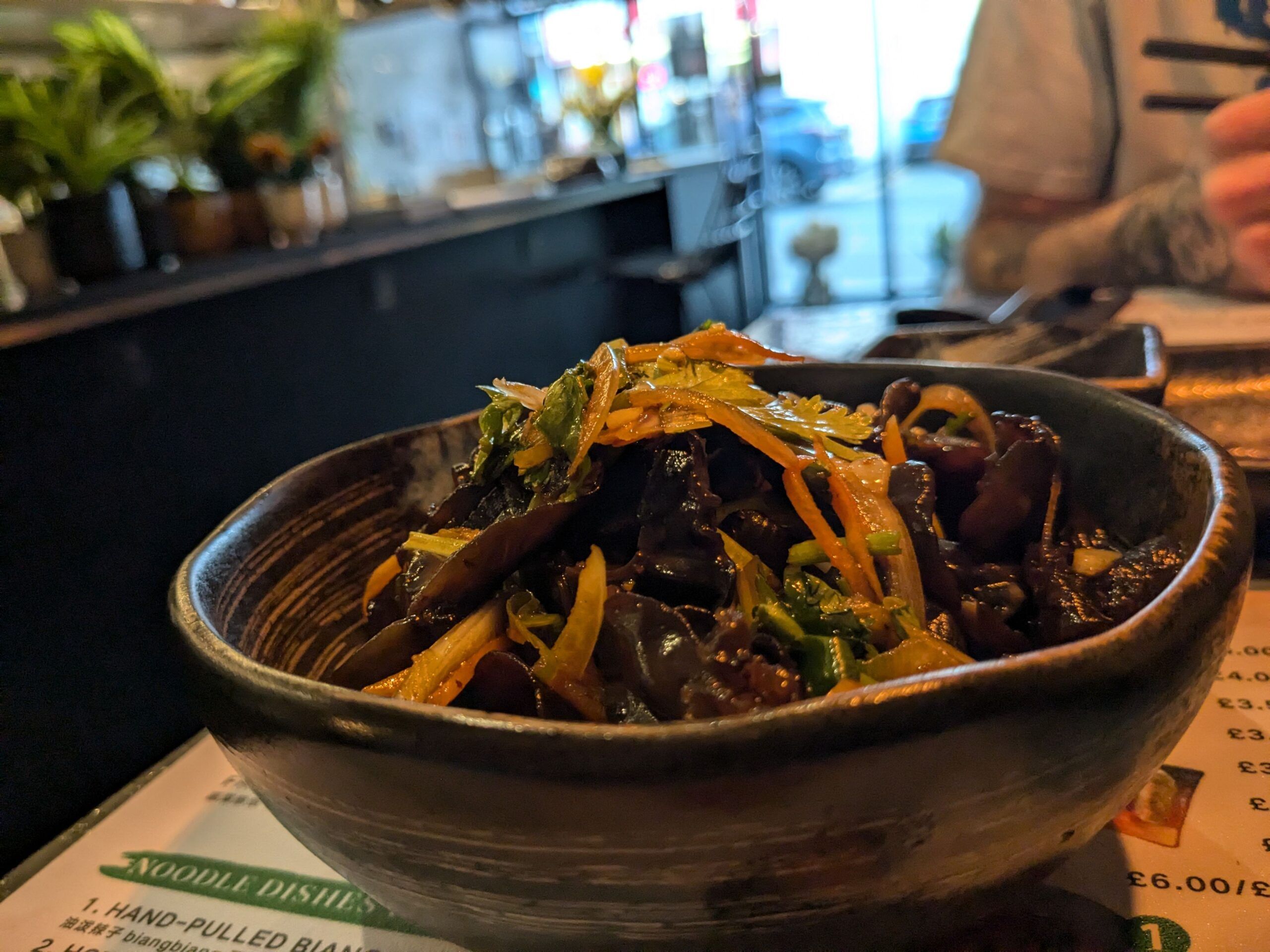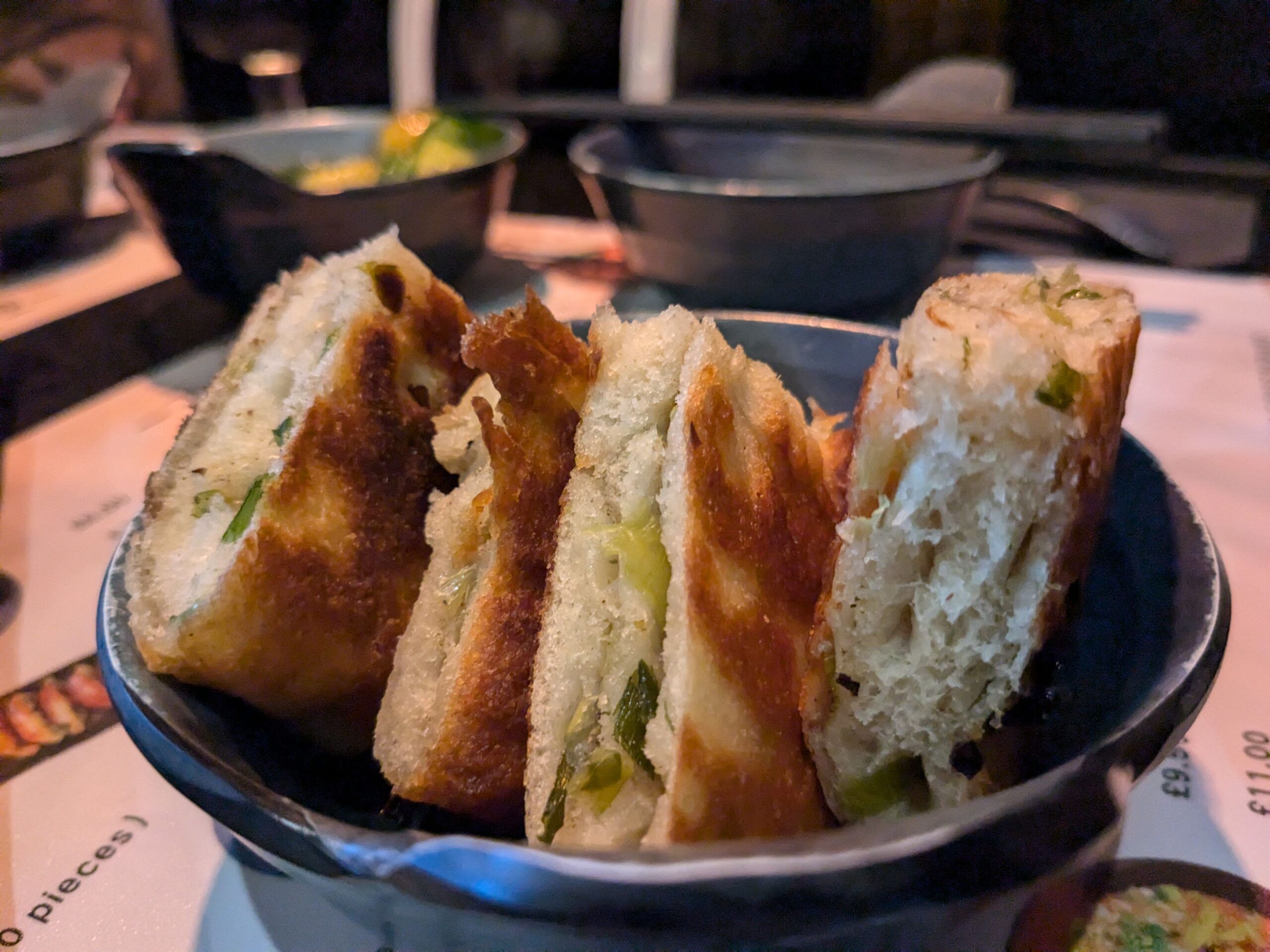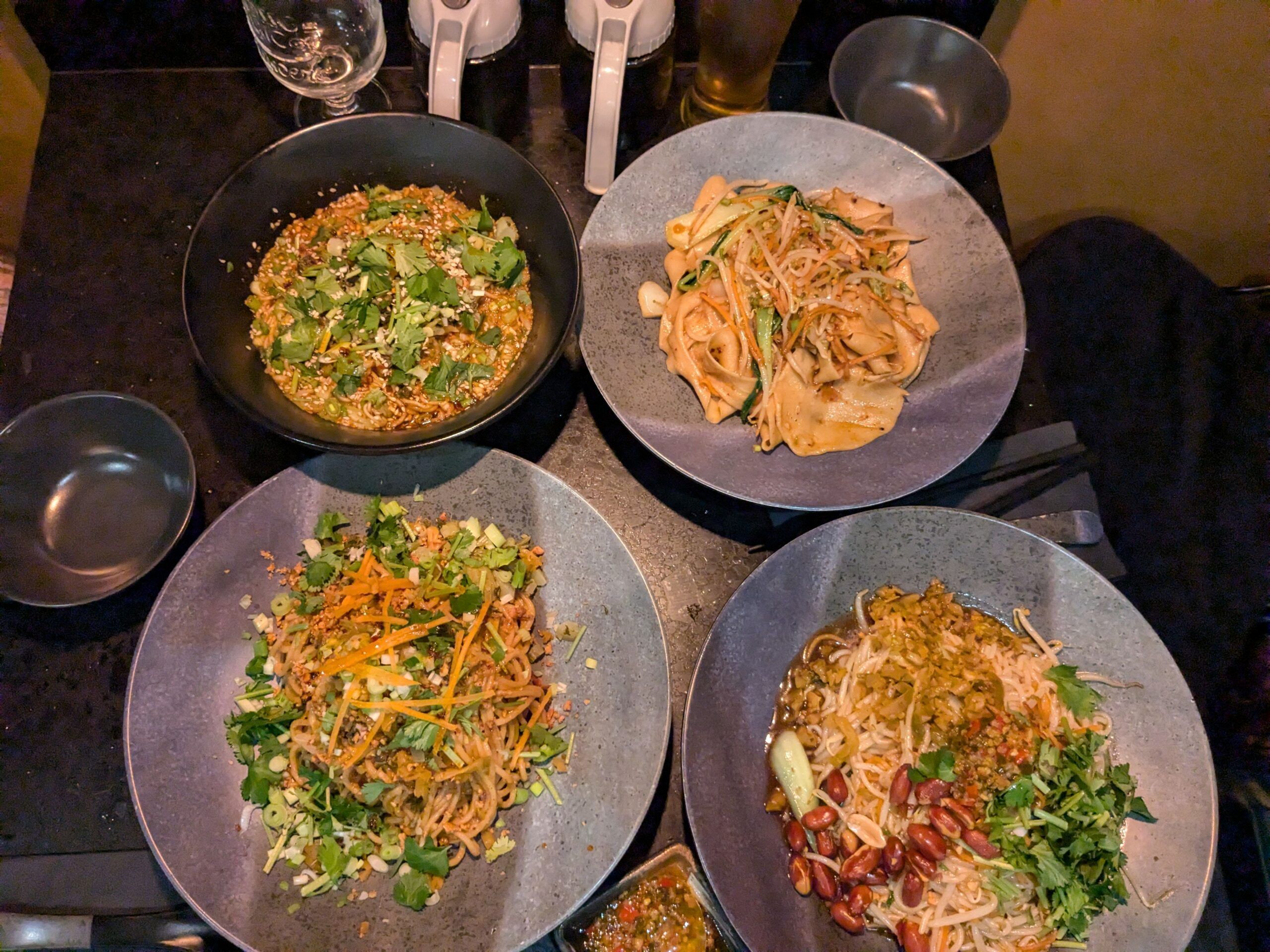ONCE UPON A TIME IN CHINA
The Shaanxi province in north central China is famous for many things, from being one of the fountainheads of Chinese civilisation, a cradle of culture and history, to its fundamental role as the start point of the legendary Silk Road.
The cross-pollination of worldly influences across the ancient trade route led to some impressively diverse culinary innovations, perhaps best exemplified by the region’s unique and varied noodle culture, which includes the thick hand-pulled ‘biang biang’ noodles of Xi’an. In that regard, since opening three years ago, the warm and welcoming Shaanxi restaurant on Preston Street very much has a USP. It’s the place you go to for a very authentic and specific kind of noodle experience.
OPEN SEASON
The first thing you’ll notice as you walk into this restaurant is the open kitchen, the chefs surrounded by vibrant greenery as they hand-pull, stretch and twist the next order of biang biang noodles. It’s a most hearty sight indeed – of course, open kitchens are nothing new, but seeing food getting prepared in this rare manner, just a few metres away from your seat, only adds to the anticipation and excitement.

THE BIG BIANG THEORY
Owner Jie Wang graciously shows us to our table and explains how he’s used his experience from his family’s other restaurant in Oxford to take the Brighton food scene to the next level. What makes biang biang noodles so special, he explains, is the unique texture that comes from the thicker and wider cut. It’s this belt-like shape that’s led to the dish becoming one of the ‘eight curiosities’ of Shaanxi.
IN VOGUE
Originally an obscure dish eaten by workers in Xi’an lacking the time to make thinner noodles, it’s now become one of the biggest food trends from this part of the world, partly thanks to significant social media interest. The word ‘biang’ is onomatopoeic, derived from the sound of thick noodle dough hitting the work surface, which is precisely what we can hear from our seats.
START ME UP
Before we get to the mains, there are some really tantalising sides on offer here. The smacked cucumber, for example, is every bit as fresh as you’d expect, but comes with a light dressing that gives every bite a mouth-watering umami kick.

Then there’s the fried vegetable dumplings – green in colour and incredibly moreish, especially when dipped in the delicious mixture of soy sauce, chilli oil, Chinese vinegar, garlic and ginger.

SMALL PLATES BIG FLAVOURS
The Chinese black mushrooms, served with onions, is also a stand-out small plate – this particular species famous for its curved appearance and being cultivated from forest trees, which explains why it’s been lovingly nicknamed the wood ear or tree jellyfish mushroom.

Many might say the most unusual small plate is the crispy scallion pancake, toasted in a way that still somehow feels light and airy, and in stark contrast to the texture of the noodles and dumplings this restaurant is arguably most famous for.

Other starters include the cabbage and seaweed salads, plus crispy peanuts in a sweet and sour sauce. And there’s also a whole other menu of sides for meat-eaters, including shredded chicken, prawn/pork dumplings and homemade beef or pork burgers.
CHEF’S KISS BIANG BIANG
Naturally, we had to kick off our mains with the hand-pulled biang biang noodles, mixed with garlic seasoning, chilli sauce and vegetables – which can also be ordered with specially cooked pork belly, stir fried tomato and egg. The first thing you notice is the sheer size of the noodles, which are almost like lasagne sheets that have been diced long ways into quarters. They’re incredibly sticky, which means they hold onto the sauce with effortless ease, ensuring every bite is as flavoursome as the next. There is, of course, a connection between Chinese and Italian food if you believe the story about Marco Polo importing pasta from the Far East, and even if that’s not strictly true, you can’t help but feel biang biang noodles must be some kind of missing link.

NOODLE HEAVEN
While it would be fair to say the hand-pulled offerings will tend to dominate the headlines at this restaurant, there’s a wealth of other noodle options that are equally deserving of your time and money. The hot and dry noodles, for example, combine peanut sauce, crushed peanuts, spring onions, chopped carrots and Chinese pickled cabbage in flawless harmony.

The rice noodles in homemade fresh chilli sauce pack the right amount of punch and heat-seekers will be thrilled to know they can always order it extra spicy or with more sauce on the side. The savoury chongqing soup noodles also live on the fiery side, though – unlike the biang biang belts – are cut much finer, more like spaghetti. Whatever you might order, it’s all gold-standard.
THE SPICE OF LIFE
Whatever your dietary preferences may be, variety is a big thing at Shaanxi – there is definitely something for everyone here. The vegan options are extensive, and there’s plenty of meat on the menu, too – from braised, balled and minced pork to tantalising chicken and beef.
Likewise, there’s an abundance of non-alcoholic beverages, from soft drinks and juices to homemade plum and iced lemon teas. And for those after something a bit stronger, you can choose between alcoholic Tiger and Tsingtao beers, as well as house red or white, plus a selection of spirits.
AN EXPERIENCE LIKE NO OTHER
Whether you’re super familiar with Chinese cuisine or a bit new to it all, Shaanxi offers a unique experience that takes you into the very heart of north central China. And despite their concept being somewhat niche and specific to that region, there’s a whole world of flavours to explore on the menu.
You’ll be pleasantly surprised by the bill, too – the prices here are very reasonable – and because the ingredients and cooking methods are so healthy, you’ll still have space for puddings like the New York cheesecake and ice cream. All in all, it’s easy to see why Shaanxi has become one of Brighton’s most treasured hidden gems – an oasis of Far Eastern flavours and traditions delivered with unparalleled craftsmanship and a whole lot of love. Long may that continue.



